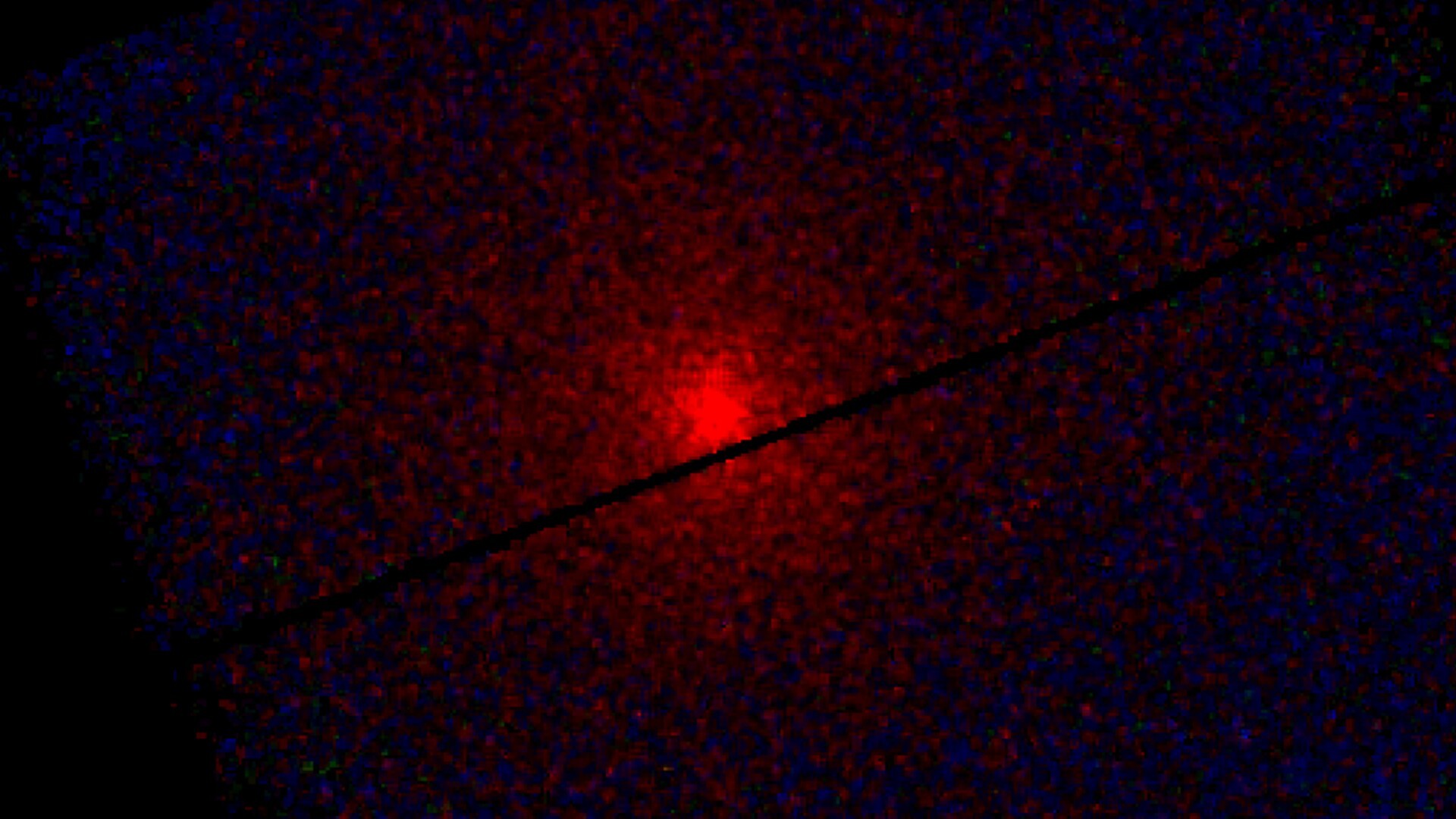Cosmic 'Bullets' Traced to Galactic Black Holes
The most energetic particles in the universe likely come from enormous black holes nestled in the restless hearts of traumatized galaxies, scientists say.
Where these cosmic "bullets" originated has been a source of much speculation, with scientists proposing everything from gamma ray bursts to decaying dark matter.
But researchers using the Pierre Auger Observatory in Argentina have found that the sources of the cosmic rays are not uniformly distributed across the sky. Instead, they appear to be coming from energetic supermassive black holes in the hearts of some galaxies, called Active Galactic Nuclei (AGN), which were also strongly suspected of being behind the rays.
Study team member and Nobel laureate James Cronin of the University of Chicago called the finding, detailed in the Nov. 9 issue of the journal Science, a "fundamental discovery."
"The age of cosmic-ray astronomy has arrived," Cronin said. "In the next few years, our data will permit us to identify the exact sources of these cosmic rays and how they accelerate these particles."
Cosmic particle accelerators
Black holes are dense regions in space where gravity is so strong that nothing, not even light, can escape. Supermassive holes can have masses that are millions to billions times that of our sun.
Breaking space news, the latest updates on rocket launches, skywatching events and more!
Scientists think most galaxies, including our Milky Way, have supermassive black holes at their cores, but only a fraction of these are thought to be AGNs. Galaxies with AGNs seem to be those that suffered a collision with another galaxy or some other massive disruption in the last few hundred million years.
AGNs devour gas and dust swirling in from their host galaxies and, through processes that are still unclear, kick some particles out at nearly the speed of light.
"If you had asked a theorist before the cosmic rays were discovered if anything could be accelerated to such high energies, they would say, 'No,'" said study team member Glennys Farrar of New York University. "So it's really amazing that nature does this."
Cosmic rays are thought to consist of protons and atoms stripped of their electrons. When one of these tiny particles smashes into Earth's upper atmosphere, it creates a cascade of secondary particles collectively called an air shower that can spread across 15 or more square miles (40 square kilometers) before hitting the ground.
In the study, the researchers traced 20 out of 27 high-energy cosmic-ray events to 20 known AGNs. The researchers say there is less than a one-in-100 chance that the correlation between the cosmic rays and AGNs is random.
Other sources?
They estimate the cosmic ray-spewing AGNs are located within 326 million light years of the Milky Way.
"This is our local neighborhood in cosmic terms," said study team member Miguel Mostafa of the University of Utah.
Because not every cosmic ray particle was accounted for, the results leave room for other sources to exist, but it could also be they emanated from AGNs that haven't been discovered yet, Farrar told SPACE.com.
And while the new study strongly links high-energy cosmic rays to AGNs, further studies will be needed to make the case air-tight. "It could be there is something that hangs around AGNs that are the true source," Farrar said. "What we know right now is if you find a [high-energy] cosmic ray, it is much more likely than random chance there will be AGN with it."
- VIDEO: Black Hole Diving
- Top 10 Strangest Things in Space
- Radio Receivers Record Cosmic Rays Hitting Earth
Ker Than is a science writer and children's book author who joined Space.com as a Staff Writer from 2005 to 2007. Ker covered astronomy and human spaceflight while at Space.com, including space shuttle launches, and has authored three science books for kids about earthquakes, stars and black holes. Ker's work has also appeared in National Geographic, Nature News, New Scientist and Sky & Telescope, among others. He earned a bachelor's degree in biology from UC Irvine and a master's degree in science journalism from New York University. Ker is currently the Director of Science Communications at Stanford University.
